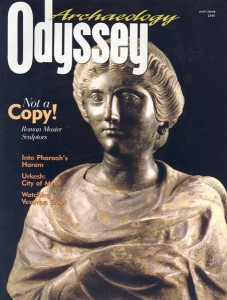The Destruction of Ebla: A Hurrian Tale
Sidebar to: When a Mittani Princess Joined Pharaoh’s Harem
One Hurrian text tells of a conflict concerning manumission at Ebla, modern Tell Mardikh, 45 miles south of Aleppo in Syria. Since 1975, Italian excavations at Ebla have yielded thousands of cuneiform tablets from the second half of the third millennium B.C.E. Although Ebla is known mainly as an Early Bronze Age site, the Italian excavations have shown that the city experienced a revival during the Middle Bronze Age (2200–1550 B.C.E.). The flourishing Middle Bronze Age city was destroyed about 1600 B.C.E., never to be rebuilt again. Our Hurrian tale provides an explanation for the city’s demise.
This story is known from a series of cuneiform tablets in the Hurrian language, with Hittite translation, unearthed in 1983 at the Hittite capital of Hattusha. The earliest Hurrian version was probably composed in Mittani-controlled north Syria and then brought to Hattusha in the 16th century B.C.E., after the Hittite king Hattushili I conquered parts of north Mesopotamia.
The tablets tell of a disagreement between Megi, the ruler of Ebla, and the elders of the city. Ebla’s main god, the Hurrian storm-god Teshub, orders that the enslaved people of the town of Igingallish be freed. Although Megi is willing to defer to Teshub, the elders do not want to part with their slaves—thus causing the storm-god’s wrath:
“If you make a manumission,” Teshub says, “Your arms will smash the enemy, so that your fields will prosper to (your) fame.
Already a library member? Log in here.
Institution user? Log in with your IP address.

